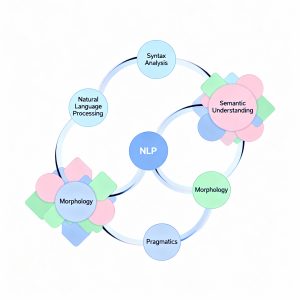When building a modern web application, selecting the right technology stack is essential for ensuring scalability, efficiency, and long-term maintainability. Two widely used approaches in web development are Full Stack Development and MEAN Stack Development.
Full Stack Development is a broad term that refers to using multiple technologies for both frontend and backend development. It allows developers to choose the best tools and frameworks for a given project, making it a flexible option for various application types.
On the other hand, MEAN Stack is a specific JavaScript-based framework that includes MongoDB, Express.js, Angular, and Node.js. It provides a streamlined approach to web development, where developers use a single programming language (JavaScript) for both frontend and backend, simplifying the development process.
Both Full Stack and MEAN Stack offer advantages, but they cater to different project requirements. In this blog, we will explore the key differences between the two, their pros and cons, and provide practical examples to help you decide which stack is best suited for your development needs.
What is MEAN Stack?
MEAN Stack is a full JavaScript-based framework used for building dynamic web applications. It consists of:
- MongoDB – A NoSQL database that stores data in flexible JSON-like documents.
- Express.js – A backend framework that simplifies routing, middleware management, and server-side logic.
- Angular – A frontend framework developed by Google for creating interactive, single-page applications (SPAs).
- Node.js – A JavaScript runtime that executes JavaScript code outside a browser, allowing server-side development.
Because MEAN Stack uses JavaScript throughout the entire stack, developers do not need to switch between different programming languages. This leads to a more streamlined development experience.
MEAN Stack Code Example
1. Setting up a MEAN Stack Project
First, create a new project and install dependencies:
sh
mkdir mean-app
cd mean-app
npm init -y
npm install express mongoose cors body-parser dotenv2. Backend (Node.js + Express + MongoDB)
Creating an Express Server (server.js)
js
const express = require("express");
const mongoose = require("mongoose");
const cors = require("cors");
const app = express();
app.use(express.json());
app.use(cors());
// MongoDB Connection
mongoose.connect("mongodb://localhost:27017/mean-stack", {
useNewUrlParser: true,
useUnifiedTopology: true,
}).then(() => console.log("MongoDB Connected"))
.catch(err => console.log(err));
// Sample API Route
app.get("/", (req, res) => {
res.send("Hello from MEAN Stack Backend!");
});
const PORT = process.env.PORT || 5000;
app.listen(PORT, () => console.log(`Server running on port ${PORT}`));3. Frontend (Angular Component Example)
Angular Component (example.component.ts)
ts
import { Component, OnInit } from '@angular/core';
import { HttpClient } from '@angular/common/http';
@Component({
selector: 'app-example',
templateUrl: './example.component.html',
styleUrls: ['./example.component.css']
})
export class ExampleComponent implements OnInit {
message: string = '';
constructor(private http: HttpClient) {}
ngOnInit() {
this.http.get('http://localhost:5000/').subscribe((res: any) => {
this.message = res;
});
}
}Advantages and Disadvantages of MEAN Stack Development
Advantages:
- Single Language (JavaScript) – Simplifies development as both frontend and backend use JavaScript.
- Fast and Scalable – Node.js handles asynchronous operations efficiently.
- NoSQL Database – MongoDB offers flexible schema, making it easy to scale applications.
- Ideal for Real-time Apps – Best suited for chat applications, social media platforms, and data-intensive apps.
Disadvantages:
- MongoDB Limitations – Lacks strong relational capabilities compared to SQL databases.
- Angular Complexity – Has a steeper learning curve than React or Vue.js.
- Security Concerns – Requires extra security configurations to prevent vulnerabilities.
What is Full Stack?
Full Stack Development is a broader term that refers to working with both the frontend and backend of web applications. A Full Stack Developer is proficient in multiple technologies, such as:
- Frontend Technologies: React, Angular, Vue.js
- Backend Technologies: Node.js, Django, Ruby on Rails, Spring Boot
- Databases: MySQL, PostgreSQL, MongoDB
Full Stack Development provides more flexibility than MEAN Stack since developers can choose from different backend and frontend technologies.
Full Stack Code Example (React + Node.js + MySQL)
1. Backend (Node.js + Express + MySQL)
Install Dependencies
sh
npm install express mysql cors body-parserExpress Server (server.js)
js
const express = require("express");
const mysql = require("mysql");
const cors = require("cors");
const app = express();
app.use(express.json());
app.use(cors());
// MySQL Database Connection
const db = mysql.createConnection({
host: "localhost",
user: "root",
password: "",
database: "fullstack_db"
});
db.connect(err => {
if (err) throw err;
console.log("MySQL Connected");
});
// Sample API Route
app.get("/", (req, res) => {
res.send("Hello from Full Stack Backend!");
});
const PORT = 5000;
app.listen(PORT, () => console.log(`Server running on port ${PORT}`));2. Frontend (React Component Example)
Install React Dependencies
sh
npx create-react-app fullstack-client
cd fullstack-client
npm install axiosReact Component (App.js)
js
import React, { useEffect, useState } from "react";
import axios from "axios";
const App = () => {
const [message, setMessage] = useState("");
useEffect(() => {
axios.get("http://localhost:5000/").then((res) => {
setMessage(res.data);
});
}, []);
return (
<div>
<h1>{message}</h1>
</div>
);
};
export default App;Advantages and Disadvantages of Full Stack Development
Advantages:
- Greater Flexibility – Can choose different frontend and backend frameworks.
- SQL & NoSQL Support – Works with MySQL, PostgreSQL, or MongoDB.
- Diverse Use Cases – Suitable for enterprise apps, e-commerce, and CMS platforms.
Disadvantages:
- More Complex – Requires expertise in multiple technologies.
- Longer Development Time – Integrating different technologies can be time-consuming.
- Higher Maintenance – Requires regular updates across different frameworks.
MEAN Stack vs. Full Stack: Key Differences
- Technology Stack
- MEAN Stack: Uses JavaScript-based MongoDB, Express, Angular, and Node.js.
- Full Stack: Can include React, Vue, Django, Rails, and other technologies.
- Performance
- MEAN Stack: Asynchronous operations, ideal for real-time apps.
- Full Stack: Performance varies based on technology choices.
- Scalability
- MEAN Stack: Best for scalable cloud-native applications.
- Full Stack: Highly scalable but depends on the chosen stack.
- Database
- MEAN Stack: Uses MongoDB (NoSQL).
- Full Stack: Supports both SQL (MySQL, PostgreSQL) and NoSQL (MongoDB, Firebase).
Conclusion
Both MEAN Stack and Full Stack development provide powerful solutions for modern web applications.
If you prefer a JavaScript-only tech stack, then MEAN Stack is a great option, especially for real-time applications and SPAs. On the other hand, Full Stack Development is the better choice if you want flexibility in choosing different frontend and backend frameworks.
The best stack depends on project requirements, scalability needs, and personal expertise. If you’re building fast, data-driven applications, go with MEAN Stack. If you need customizability and a mix of technologies, Full Stack is your answer.



